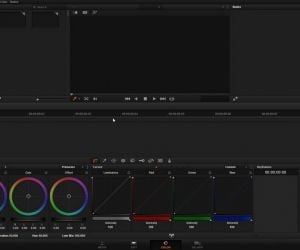
#Davinci resolve lite 11. update
Then back in Resolve, hit Update Lists. Now you can use it in any project. From there go to the Lookup Tables tab and hit Open LUT Folder. Then just copy the LUT into the folder. The easiest way to do this is start up Resolve, open the default project, then go to the Project Settings by hitting the cog in the bottom left corner. Change the extension back to “.cube” and untick the hide extension box.Right click the file and go to Get Info.While I haven’t experienced this on my Mac, others reported this fix: Some people on Mac have reported that the file gets downloaded as a “.cube.txt” file. 709 is defined by the ITU, and is used by most HD televisions.įirst you’re going to have to download the LUT it should be a “.cube” file. sRGB is defined by the IEC, and is used by most computer displays. Note: All of the color spaces mentioned are display standards. This should provide a more “neutral” starting point for you to grade your footage from. 2020 is a much wider color space than sRGB, so the footage will appear less saturated compared to when viewing in sRGB. 709 or sRGB (709 and sRGB share the same color gamut). Now in order to make this process of getting to a better starting point a little less painless I’ve created a LUT that puts your footage into the ITU Rec. This is because cinema cameras recording raw data capture a much wider range of colors than sRGB can properly display.

The problem with this is that when dealing with footage from a cinema camera that doesn’t have a documented, wide gamut color space, we don’t get to see the “cinema” colors from the footage. Such is the case with Resolve, the only options being Rec. This has to do with the fact that these programs, more than likely, adhere to the sRGB color space. More often than not, the problem is that the colors are too vibrant and are oversaturated. Most CinemaDNG compatible programs don’t give many options in the way of suitable starting points right out of the box, so we’re forced to tweak what the program gives us until we have a neutral place to start our grade from.


 0 kommentar(er)
0 kommentar(er)
